SWEDISH SOUTH ASIAN STUDIES NETWORK
Thursday, 8 December 2005
“Little Sweden in a life saving effort of great importance”
ICDDR,B – Centre for Health and Population Research, Dhaka, Bangladesh
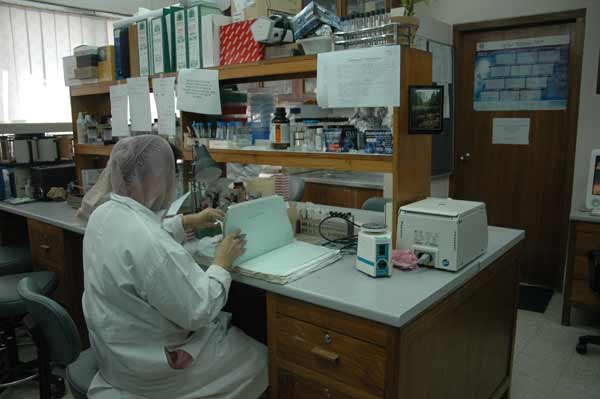
Web page: www.icddrb.org
The International Centre for Diarrhoeal Disease Research, Bangladesh is since more than 35 years an important international research institute to help solve the alarming health problems that people in Bangladesh and similar developing countries are facing. To understand the significance of the Institute: it is the only global health research environment that matches the international agricultural research institutes like Centro Internacional de Mejoramiento de Maíz y Trigo (CIMMYT) in Mexico and the International Rice Research Institute (IRRI) in the Philippines.
The mission is ‘to develop and promote realistic solutions to the major health, population and nutrition problems facing the poor people of Bangladesh and other settings.’ Placed in Bangladesh, one of the biggest and absolute poorest nations, and with most of the empirical material derived from its conditions, it works out solutions that work. It was here that the revolutionary ORT (Oral Rehydration Therapy) method was first developed and continues to be refined. One estimate is that ORT alone saves more than 3 million lives every year! Since 1978 the Institute has trained more 20 000 health professionals from over 78 countries. It provides treatment to a great number of patients in its hospitals in Dhaka and some districts, which is also a prerequisite for working out new ways of treatment and prevention.

Supported by 55 donor countries
Today the Institute engages more than 2 000 health researchers, doctors and assistants, has a budget of close to US $ 20 million and a vast network of academic collaborators around the world. It is supported by 55 donor countries, UN specialised agencies, foundations, universities, etc. It is in this context that Swedish Sida/SAREC has made and continues to make a major contribution (in 2004 the Swedish contribution to the budget was close to 7 %, or 1 million 216 thousand US $). There may be as many as around twenty of the most qualified researchers in the staff, who have received PhD degrees and further research training at Swedish Universities, including Uppsala, Karolinska, Umeå, Linköping, Lund, Göteborg and Linköping. So this is also an “abode” of friendship with Sweden in this mega-city.
It is still the interaction between poverty, nutrition problems, failing sanitation and vector-borne infectious diseases, which is the core focus of the activities, but more recent challenges like sexually transmitted diseases (Hiv/AIDS), arsenic in groundwater, ageing problems among the poor are also included in the vast research agenda. Thus, children’s and women’s health situation is a major focus, but so are also the poorest groups at large in rural and urban settings, minorities, sex-workers, and so on.
Realistic understanding of health issues
The Institute also tries to integrate cultural and social interaction
dimensions in the research. The grim cultural practices here, for example,
”eating down” during pregnancy in order to avoid large babies,
is an illustration to the kind of challenges that face the researchers,
or the fact that breast feeding is uncommon among female factory workers
in Bangladesh’s now two million strong and female dominated export
garment industry. Nutrition and health is not just a question of the overall
availability of food.
We found a realistic understanding of health issues among people we met
at the Institute. When Bangladesh now experiences improvement of health
status in many fields, like for example, reduced infant and maternal mortality
in the last 20 years, everybody more or less understand that the major
causes are to be found among others in the progress of agriculture and
the boost to the economy that the new export oriented garment industry
has created. Even so, here is an Institute that strives at practical medical
solutions in the current context of continuing large poor groups and in
a far from perfect public/private health care environment, and also tries
to affect public opinion about the distribution of food, health services
and other basic amenities.
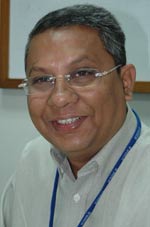
Visits to several divisions of ICDDR,B
We spent a whole day in this neat, clean and fascinating little microcosm
of all kinds of health research and related activities, warmly hosted
by Dr. Mahfuzar Rahman (photo
to the left), Environmental Epidemiologist at the Public Health Science
Division (with a PhD from the Division of Occupational
and Environmental Medicine, Department of Molecular and Clinical Medicine,
Faculty of Health Sciences, Linköping University.
He defended a thesis entitled ”Nonmalignant Health Effects of
Arsenic Exposure” in 1999.
The programme for the day was prepared by Dr. Rahman and his colleague from the Public Health Science Division, Co-ordination Manager M Haniful Rahman, Co-ordination Manager.
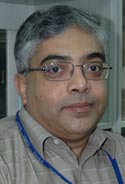 |
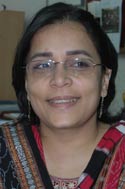 |
 |
| G Balakrishna Nair | Rubhana Raqib | Motiur Rahman |
• Laboratory Sciences Division (LSD)
Web page: http://202.136.7.26/org/orgunits.jsp?idDetails=5&searchID=5
The lab facilities are also used by graduate students from Dhaka University.
We met the Director G. Balakrishna Nair and the two Associate Scientists Rubhana Raqib (defended her PhD at Karolinska Institute in 1995) and Motiur Rahman (Head of the RTI/STI Laboratory, defended his PhD at Karolinska Institute in 1997), and were shown around in the laboratories.
• Executive Director Divison
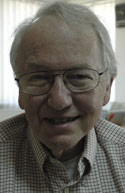
Web page: http://202.136.7.26/org/orgunits.jsp?idDetails=1&searchID=1
We met the Executive Director David
Sack (photo to the left) and Ishtiaq
Zaman, Head of the External Relations and Institutional Development
Office, ERID, for an hour and had a discussion on the Swedish involvement
in ICDDR,B. Sack has been the Director since 1999, but has altogether
worked for the institution for 12 years. Sack is much involved in
research collaboration with Professors Jan
Holmgren and Ann-Mari
Svennerholm from the Division of Medical Microbiology
and Immunology,
Institute of Biomedicine
at Sahlgrenska Academy, Göteborg University, These are the two Swedish researchers
behind the successful development of mucosal vaccines,
most notably against gastrointestinal infections (including the internationally
widely registered oral cholera vaccine Dukoral).
We were informed about the excellent journal published by ICDDR,B, called
Journal of Health, Population and Nutrition. It is fully available
on the Internet, see http://www.icddrb.org/jhpn.
• Public Health Sciences Division (PHSD)
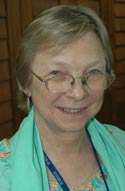 |
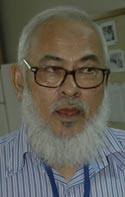 |
 |
| Marge Koblinssky | Mohammad Yunus | Marie Vahter |
Web page: http://202.136.7.26/org/orgunits.jsp?idDetails=6&searchID=6
We met the present Director of the division Marge
Koblinsky, and the Senior Scientist and Head of the Matlab Health
Research Programme Mohammad Yunus.
By chance our visit to ICDDR,B coincided with a visit by Professor Lars-Åke Persson from International Maternal and Child Health (IMCH), Department of Women’s and Children’s Health, Uppsala University, who previously worked for four years as manager for ICDDR,B:s Research Division on Public health. He had come to Dhaka along with Prof. Marie Vather from the Division of Metals & Health, Institute of Environmental Medicine; Karolinska Institutet, Stockholm (who is doing research on Cancer and reproductive effects of inorganic arsenic), and a Swedish Radio journalist, Ann Louise Martin, preparing for a programme.
• Training Education Unit (TEU), Information Sciences Division
Web page: http://202.136.7.26/org/orgunits.jsp?idDetails=38&searchID=38
We had a meeting with Dr Ahmed
Nurul Alam, Head of the Training Education Unit. Dr Alam defended
his PhD in London in 1980, and was head of the Cholera hospital that preceded
ICDDR,B, during the 1980’s, and had at that time close contact with
Arne Dahlquist, nutritional researcher at
Lund University. Together they had a project on malnourished children.
He is now in charge of training courses and programmes that ICDDR,B arranges
both for local Bangladeshi doctors and administrators, and for International
visitors from developing countries in Asia, Africa and Latin America.
Some courses run for 1-2 days, others are more long-term. More than 20
000 people pass these training courses every year, but out of these the
great majority come only for one-day training in how to deal with diarrhoeal
diseases. 200–500 people pass longer and more structured courses.
Special month-long courses on Tropical diseases are organised for Japanese
physicians, and another target group are the International NGOs like WHO
and Care. They are offered two-weeks courses twice a year on disaster
management and epidemiology, courses that are also open to government
candidates.
The training unit also organises training programmes for medical students coming from many countries in Europe and America, including Sweden. A group of students from Uppsala University’s course on Global Medicine for example spent two weeks at ICDDR,B in Dhaka and Matlab in January 2005, and right now plans were made for a similar visit by Public Health students from Harvard, arriving in January 2006.
• Social and Behavioural Science Unit, Public Health Science Division
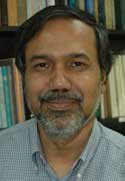 |
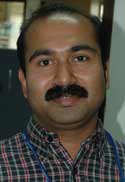 |
 |
| Abbas Bhuiya | A M Waheedul Hoque | Sharful Islam Khan |
Web page: http://202.136.7.26/org/orgunits.jsp?idDetails=59&searchID=59
We met Abbas Bhuiya, Senior Social
scientist, Head of the Poverty & Health Programme & Social and
Behavioural Science Unit, and had a discussion with him.
After that we were offered a nice packet lunch in a
conference room. During the break we had an interesting conversation with
Sharful Islam Khan, a medical anthropologist
working at the Social and Behavioural Science Unit, and A
M Waheedul Hoque, PhD candidate in a sandwich programme with International
Maternal and Child Health (IMCH), Department of Women’s and
Children’s Health, Uppsala University.
Hoque is involved in the the so-called MINIMat research project along
with Prof. Lars-Åke Persson, and Dr
Shams El Arifeen, dealing with under-nourished
pregnant women in Matlab upazila, Bangladesh, the well-established field
site of ICDDR,B. Read
more about the MINIMat research project.
• Clinical Sciences Division (CSD)
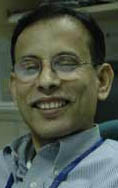 |
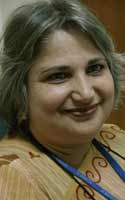 |
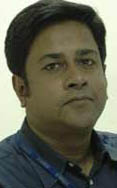 |
| Md. Shafiqul Alam Sarker | Jena Derakhshani Hamadani | Iqbal Hossain |
Web page: http://202.136.7.26/org/orgunits.jsp?idDetails=2&searchID=2
A meeting was arranged for us to meet Mohammed
Abdus Salam, Director for the Clinical Sciences Division (CSD). Dr.
Jena Derakhshani Hamadani, Associate
scientist and coordinator for the Child Development Unit within CSD, and
the PhD candidate Md. Shafiqul Alam
Sarker, also participated in the meeting.
We were informed about interesting research projects, in the fields of
nutrition studies, breast feeding, nursing services, etc. They are carried
out within the division, some of them with Swedish connections.
Sida/SAREC finances a project on child health by Dr. Baitun Nahar, a researcher that was awarded ”The Young Investigator Award” of the 2nd World Congress of Pediatric Gastroenterology, Hepatology and Nutrition, held in Paris in July 2004, for a presentation titled ”Do severely-malnourished hospitalized children differ in their development and behaviour from severely-malnourished children attending community nutrition centres?”
Since 2001 Md. Shafiqul Alam Sarker is a PhD candidate in a sandwich programme with the Division of of Clinical Immunology, Dept. of Laboratory Medicine at Karolinska Institute Medical University, Stockholm. The supervisor is Prof. Lennart Hammarström, and the doctoral project is titled ”Evaluation of Immunoglobulensis and Probiotic agent in infectious diarrhoea in children”. Sarker will preliminary defend his thesis in June 2006.
• Information Sciences Division (ISD)
Web page: http://202.136.7.26/org/orgunits.jsp?idDetails=4&searchID=4
We had a meeting with the Director Peter
Thorpe
• Health Systems and Infectious Diseases Division (HSID)
Web page: http://202.136.7.26/org/orgunits.jsp?idDetails=3&searchID=3
Our last programme for the day was a visit to the HSID division, and a
meeting/discussion with the Director Dr. Charles
Larson from McGill University in Canada; and the American Steve
Luby, Head of the Programme on Infectious Diseases and Vaccine Sciences.
 We finally
thanked Dr. Mahfuzar Rahman, who had been our guide through ICDDR,B during
the day, and the researchers we met for sharing of their valuable time.
We finally
thanked Dr. Mahfuzar Rahman, who had been our guide through ICDDR,B during
the day, and the researchers we met for sharing of their valuable time.
A small reflection afterwards: Many at the Institute seem to share our
feeling that the acronym ICDDR,B is somewhat awkward and the subtitle
Centre for Health and Population Research less than catchy. Anyone should
feel free to suggest a better name and thus honour this important institution.
SASNET - Swedish South Asian Studies Network/Lund
University
Address: Scheelevägen 15 D, SE-223 70 Lund, Sweden
Phone: +46 46 222 73 40
Webmaster: Lars Eklund
Last updated
2010-05-21
